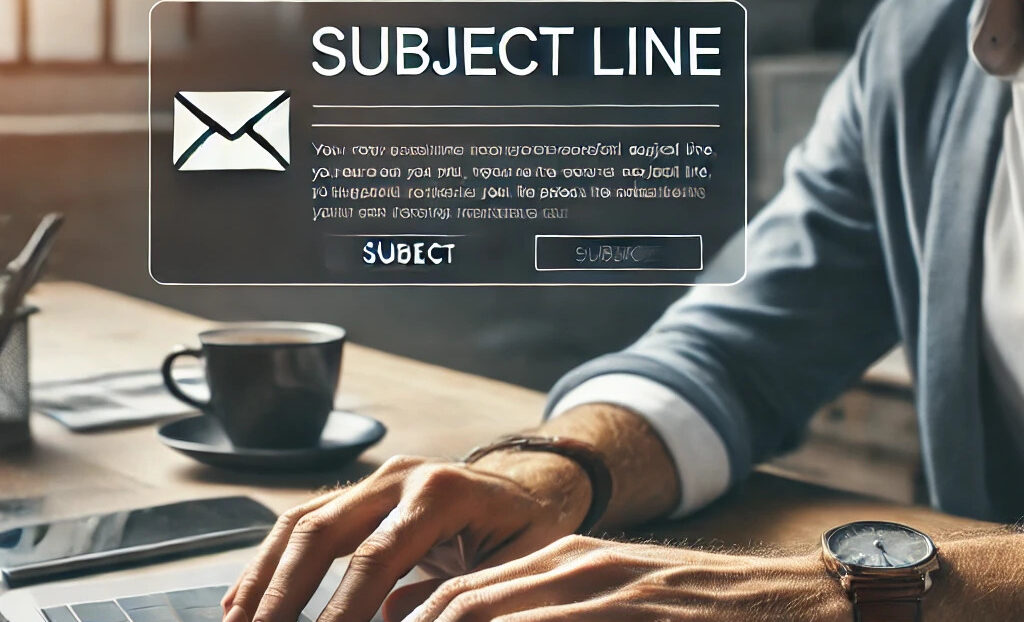In the competitive world of B2B marketing, sending cold emails is one of the most effective ways to connect with potential clients, but it requires a strategic approach to yield results. Crafting the perfect cold email involves more than just a catchy subject line or persuasive message; it’s about understanding your audience and using the right tactics at every stage.
From creating compelling subject lines that boost open rates to writing clear, concise messages that deliver value, every element plays a role. Follow-up strategies are equally important, as they can make the difference between a missed opportunity and a new business connection. In this article, we will explore best practices for sending B2B cold emails, covering how to captivate your audience from the first impression to the final follow-up.
Crafting a Compelling Subject Line to Increase Open Rates

The subject line of a B2B Cold Emails outreach is the first impression you make on a potential business client, and it plays a crucial role in whether your email gets opened or ignored. In the competitive world of B2B marketing, a compelling subject line in your B2B Cold Emails can be the difference between a successful outreach and a missed opportunity. Here are some best practices for crafting subject lines that not only grab attention but also increase open rates.
The Importance of Personalization in Subject Lines
Personalization is one of the most effective ways to make your subject line stand out in B2B Cold Emails. Generic subject lines tend to get overlooked, especially when prospects are bombarded with dozens of emails daily. Personalizing the subject line by including the recipient’s name or company can instantly grab their attention. For example, using a subject line like “John, let’s help [Company Name] increase sales this quarter” immediately makes the recipient feel that the email is tailored to their specific needs.
Beyond just names, you can personalize based on the recipient’s industry or role. A subject line like “How [Your Company] can support your digital marketing efforts” speaks directly to their business function and positions your B2B Cold Emails as relevant to their job.
Personalization not only increases the likelihood of your B2B Cold Emails being opened but also sets the tone for a more genuine, relationship-focused interaction rather than a cold, one-size-fits-all approach.
How to Make Your Subject Line Intriguing Without Being Overly Salesy
While it’s essential to entice recipients with the promise of value, you should avoid coming across as too pushy or overly sales-oriented in B2B Cold Emails. If your subject line feels like a blatant pitch, it may turn recipients off immediately. Instead, aim to spark curiosity or hint at a benefit without making a hard sell.
For instance, rather than saying, “Boost Your Sales by 50%,” which may sound too aggressive, try something more subtle like “A new way to improve your team’s sales results.” This piques curiosity and entices the recipient to open your B2B Cold Emails to learn more, without overwhelming them with an overly promotional tone.
Another technique is to focus on solving a problem rather than immediately showcasing a product or service. A subject line such as “Struggling with [industry problem]? Here’s a solution” presents an opportunity for the recipient to discover a solution to a challenge they’re likely facing, which feels more natural in B2B Cold Emails than pushing a product.
Best Practices for Using Urgency or Curiosity to Grab Attention
Using urgency or curiosity in your B2B Cold Emails subject line can also be an effective way to increase open rates. However, this must be done thoughtfully and sparingly. Too much urgency can come across as spammy, but a well-placed time-sensitive offer can prompt the recipient to act quickly.
For example, subject lines like “Last chance for a free consultation!” or “Only 5 spots left for this month’s webinar” create a sense of urgency that encourages the recipient to open your B2B Cold Emails and take action before it’s too late.
Curiosity also plays a vital role in crafting compelling subject lines. Subject lines that promise intriguing information without fully revealing the details can make the recipient want to open the email to learn more. For example, “Here’s the secret to saving [X amount] on your next project” creates intrigue and encourages the recipient to click through your B2B Cold Emails to discover the full offer.
In Conclusion, Crafting a compelling subject line for your B2B Cold Emails requires personalization, subtlety, and a strategic use of urgency and curiosity. By making your subject lines engaging and relevant to the recipient, you increase the likelihood of your B2B Cold Emails being opened, thus boosting your chances of success in B2B outreach.
Writing a Clear and Concise Message that Adds Value

In B2B cold emails, the content of your message is the deciding factor in whether your email is read or ignored. Crafting a clear, concise message that communicates value effectively is essential for engaging your recipient and prompting them to take action. Here’s how to highlight the value proposition, address pain points, and keep your message brief while making a significant impact.
Highlighting the Value Proposition Quickly and Clearly
The value proposition is the core of your message, and it needs to be front and center from the beginning. In B2B cold emails, you don’t have the luxury of a long introduction; you have only a few seconds to grab attention. Start by clearly stating how your product or service can solve a specific problem for the recipient.
For example, instead of a vague statement like “We offer great solutions for businesses,” focus on the specific benefit. A stronger message would be “Our software reduces operational costs by 20%, helping your team streamline processes.” This immediately communicates value and piques interest in B2B cold emails.
Make sure to answer the key question your recipient is asking: “What’s in it for me?” A good value proposition in B2B cold emails should be concise, addressing the recipient’s business needs or challenges directly and offering a clear solution that captures their attention.
Focusing on the Recipient’s Pain Points and How Your Solution Can Help
A successful B2B cold email must empathize with the recipient’s challenges. Focus on their pain points—whether they’re struggling with inefficiency, high costs, or missing out on opportunities—and explain how your product or service directly addresses those issues.
For example, a subject line in B2B cold emails might say, “Tired of managing manual processes? Here’s a solution that automates your workflow.” Then, within the body of the email, you can elaborate on how your service specifically resolves these pain points. It’s crucial not to sound generic; your messaging should be tailored to each recipient’s business context. This makes the email feel personalized and relevant rather than just another unsolicited pitch.
Be empathetic to their situation, acknowledge their struggle, and show them the immediate benefits of your solution in a way that makes their job easier or more effective. Personalization is the key to successful B2B cold emails.
The Importance of Keeping Your Email Brief and to the Point
In the world of B2B cold emails, brevity is not just a courtesy—it’s a necessity. Business professionals are constantly juggling multiple tasks and don’t have time to read lengthy emails. A concise, well-structured email respects the recipient’s time and improves the likelihood of a response.
Avoid long paragraphs and get to the point quickly. Focus on the key information: why you’re reaching out, what problem you’re solving, and how they can take action. Bullet points or short sentences make it easier to digest the main message without overwhelming the reader. For example, B2B cold emails could be structured as follows:
- Problem: “Managing your team’s tasks manually is time-consuming and prone to errors.”
- Solution: “Our tool automates these tasks, saving your team 10+ hours weekly.”
- CTA: “Let’s schedule a demo to show you how it works.”
Keeping your B2B cold emails brief ensures that the message is clear and your recipient isn’t left searching for the key information.
In conclusion, writing B2B cold emails that add value requires clarity, empathy, and conciseness. By highlighting your value proposition clearly, focusing on the recipient’s pain points, and keeping your message short and actionable, you increase the chances of your B2B cold emails being read and responded to.
Follow-Up Strategies to Boost Response Rates

Following up on a cold email is crucial to keeping the conversation going, especially since many recipients may miss or overlook your initial message. A well-timed, thoughtful follow-up can significantly increase your chances of receiving a response. However, it’s important to strike the right balance between persistence and respect for the recipient’s time. Here’s how to effectively implement follow-up strategies that boost response rates.
How Often and When to Send Follow-Up Emails
Timing is a critical factor in sending follow-up emails. While there’s no one-size-fits-all approach, it’s generally recommended to wait about 3-5 business days before sending a follow-up email. This allows your recipient enough time to review your initial message without feeling overwhelmed by constant reminders. If you follow up too soon, your email might come across as pushy, but waiting too long could lead to a lost opportunity.
A typical follow-up cadence might involve sending an email after 3 days, then again after 7-10 days if you don’t receive a response. If your message is time-sensitive, such as for a limited-time offer, you may want to follow up sooner to create urgency. On the other hand, for less urgent matters, spacing out follow-ups over a few weeks is acceptable. Always monitor the response rates and adjust your approach if necessary to ensure you’re not over-saturating your recipient’s inbox.
Crafting Follow-Ups That Are Polite Yet Persuasive
Politeness is essential in follow-up emails. You don’t want to come off as pushy, but you also want to encourage a response. Craft your follow-up message with a tone that is friendly, respectful, and professional. Begin by acknowledging that the recipient may be busy, and gently remind them of your previous email. For example:
“Hi [Name],
I wanted to follow up on my email from last week regarding [topic]. I understand you may have a lot on your plate, but I wanted to ensure you didn’t miss my message and see if this is something worth discussing further.”
Next, reiterate the value you are offering in a concise way, reminding them of how your product or service addresses their specific needs. Keep the follow-up brief and to the point—avoid long-winded explanations. A compelling yet polite nudge might be just what’s needed to spark a conversation.
Using Varied Approaches in Follow-Ups to Increase Engagement
One of the best strategies to boost response rates is to vary your follow-up approach. Repeating the same message verbatim can make it seem automated and unpersonalized. Instead, modify each follow-up to keep the recipient engaged and interested. Try using different formats or angles to reach the prospect:
- Offer additional value: Provide something new, such as a relevant blog post, case study, or success story that addresses their pain points. This shows that you’re genuinely interested in helping, rather than just making a sale.
- Create urgency: If your offering is time-sensitive, highlight this in a polite manner. For instance, “I just wanted to make sure you don’t miss out on our special offer, which expires soon.”
- Ask a question: A question can open the door to a conversation. “Is there a better time for us to connect on this?” or “Would you be open to discussing how we can support your current goals?”
These varied approaches keep your emails fresh and tailored to the recipient’s needs, showing you’ve taken the time to personalize your communication.
In conclusion, following up on cold emails is an essential part of the outreach process. By timing your follow-ups strategically, maintaining politeness while being persuasive, and mixing up your approach, you can significantly improve your chances of engaging the recipient and driving the desired action. Consistency, patience, and thoughtful personalization will help your follow-up emails stand out and encourage responses.
Conclusion
In conclusion, sending effective B2B cold emails requires a careful blend of personalization, value-driven messaging, and persistence. By focusing on crafting a compelling subject line, delivering a clear and concise message, and employing well-timed, thoughtful follow-ups, you increase the chances of engaging your recipient and prompting a response. Every interaction is an opportunity to build rapport, demonstrate value, and nurture a relationship. When executed correctly, cold emails can become a powerful tool for driving business growth and establishing meaningful professional connections.

